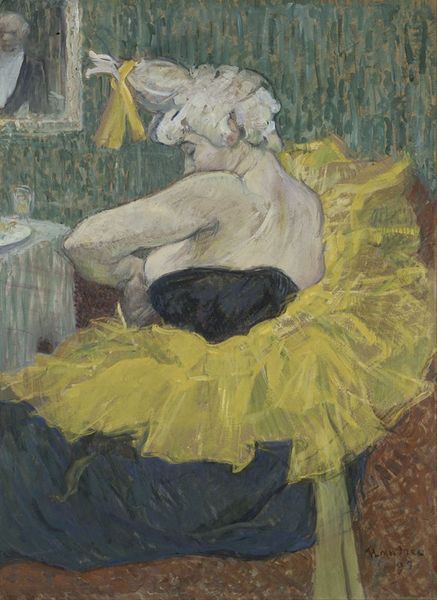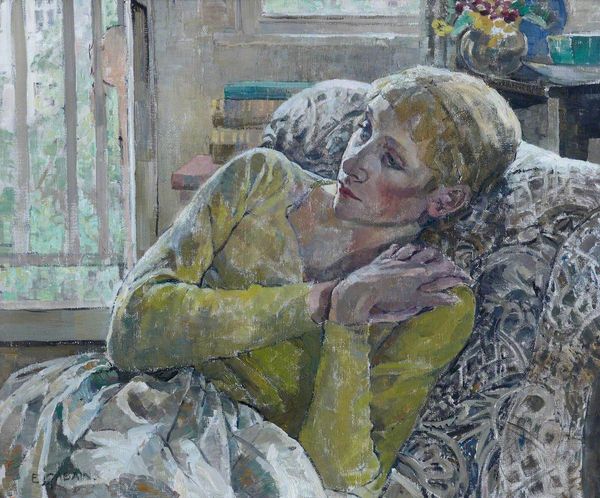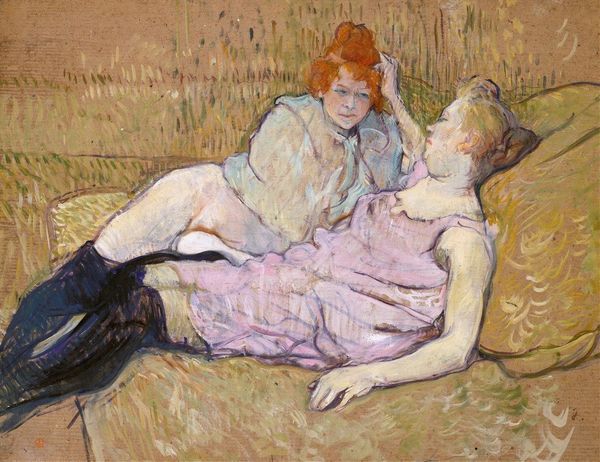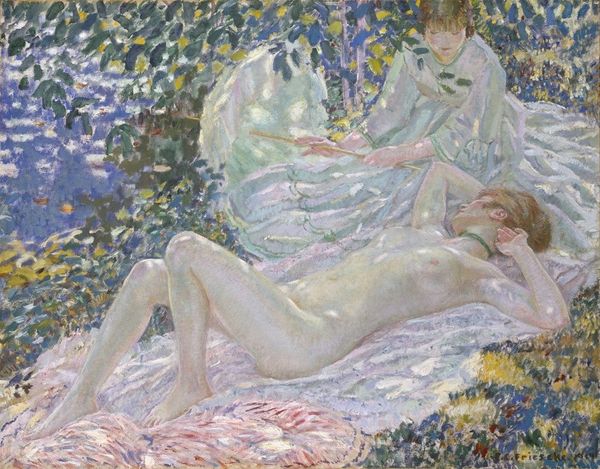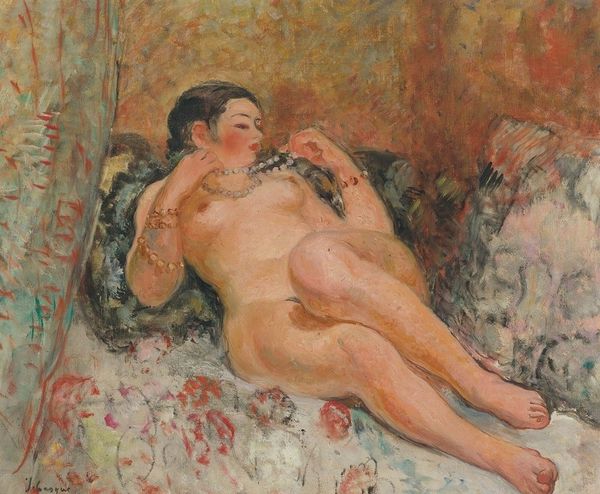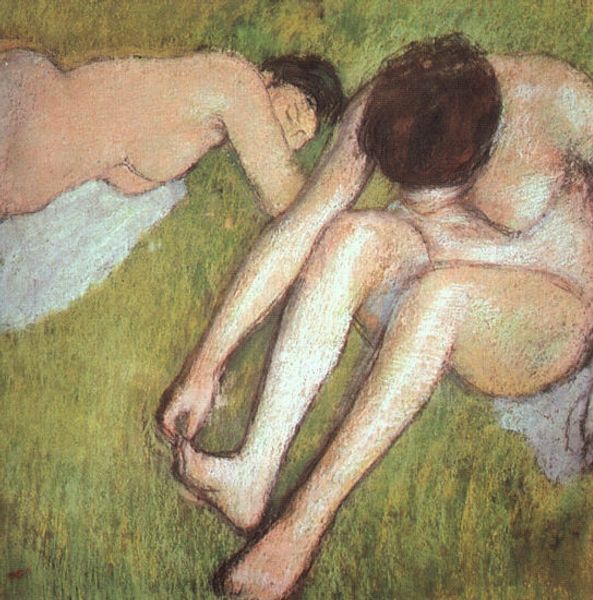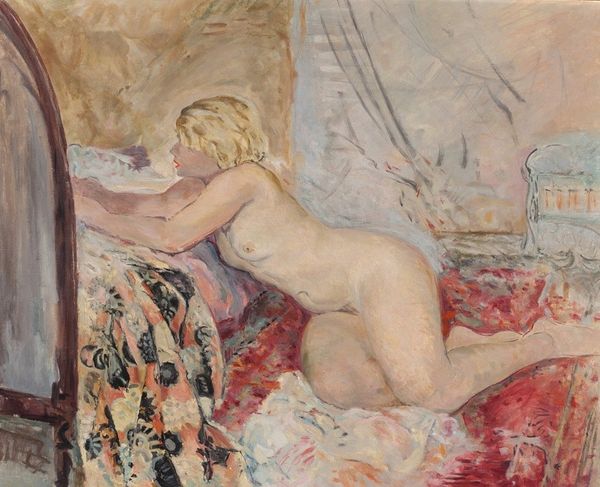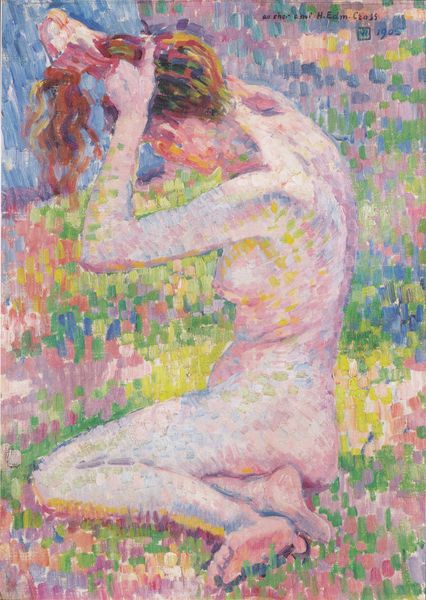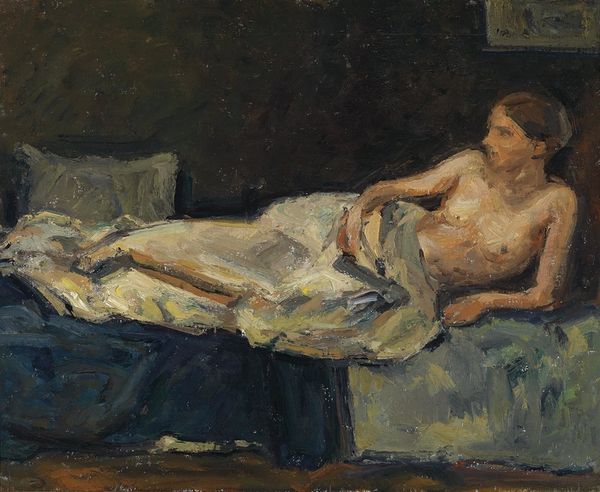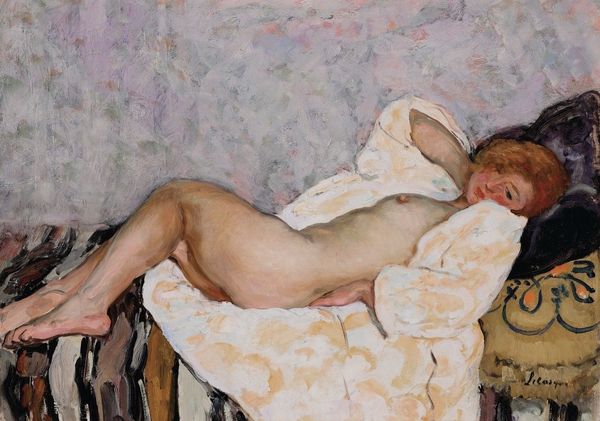
painting, oil-paint, impasto
#
portrait
#
figurative
#
painting
#
canvas painting
#
oil-paint
#
figuration
#
possibly oil pastel
#
oil painting
#
impasto
#
symbolism
#
genre-painting
#
post-impressionism
#
erotic-art
Copyright: Public Domain: Artvee
Curator: It's really a striking image, wouldn't you agree? This painting, titled "L'Abandon," was completed by Henri de Toulouse-Lautrec in 1895, and it's an oil on canvas. Editor: There's an incredible softness to it, and yet... also a feeling of profound weariness. The hazy golden palette, that sense of intimacy... it suggests a scene both tender and melancholic. Curator: Lautrec, known for capturing the vibrant nightlife of Montmartre, often depicted performers, dancers, and yes, even the inhabitants of brothels, offering a glimpse into their private moments. This particular work reflects his engagement with societal outcasts and the emotional realities they navigated. Editor: It’s fascinating how he uses the iconography of the bed—typically a space of comfort, intimacy, perhaps even creation—to convey something closer to defeat or resignation. Note how the disheveled sheets and loose clothing suggest not passion, but rather exhaustion. There are echoes of the fallen woman trope, but is that what he intended? Curator: Indeed. He challenges conventional societal representations. These women weren't just bodies to be consumed but individuals with complexities. Consider, for instance, the historical context. Legalized prostitution created a space of tolerance, however conditional, offering certain women relative economic independence. How did this framework shape their understanding of freedom and exploitation? Editor: I think that is visible in how one woman almost cradles the other... or consoles her in her sorrow. Is it also possible Lautrec is echoing something universal here—not merely a scene from a brothel but perhaps something deeper concerning female vulnerability or societal pressures? Curator: That is plausible and precisely the debate surrounding his oeuvre. He was born into aristocracy and died an alcoholic. Many want to simply reject the artist's complex depictions by only seeing them as either exploitation or as empathy. Editor: Well, regardless of the specifics, Lautrec created something undeniably haunting here. Curator: Yes, “L’Abandon” stays with you long after you’ve left the gallery, revealing more facets with each reflection.
Comments
No comments
Be the first to comment and join the conversation on the ultimate creative platform.
